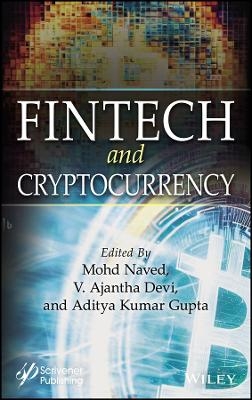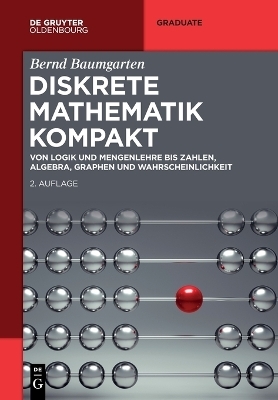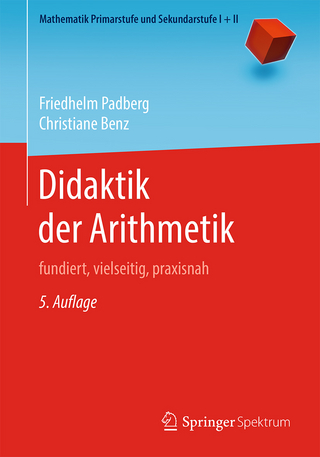
Fintech and Cryptocurrency
Wiley-Scrivener (Verlag)
978-1-119-90481-6 (ISBN)
Digital currencies, decentralization of money, and the growth of new technologies like blockchain, the Internet of Things, and machine learning have produced new opportunities and difficulties for banking and finance, as well as users of these services in electronic commerce. New banking and finance technologies may improve operational efficiency, risk management, compliance, and client pleasure, but they can decrease barriers and introduce new concerns, such as cybersecurity risk.
Cryptocurrencies with smart contracts for payments and trading, as well as AI systems with adaptive algorithms that allow picture and speech recognition, expert judgement, group categorization, and forecasting in a variety of fields, are instances of increased automation. Simultaneously, the potentials pose risks and raise regulatory concerns. The rise of blockchain technology and its widespread use have had a significant impact on the operation and management of digital systems. At the same time, researchers and practitioners have paid close attention to digital finance. Blockchain’s first applications were limited to the production of digital currency, but it has now been expanded to include financial and commercial applications. Innovative digital finance has had a huge impact on business and society since it has been extensively adopted by businesses and consumers. As a result, the goal of this edited book is to expand and deepen our knowledge of the business possibilities of novel blockchain and digital financial applications.
Mohd Naved, PhD, is an associate professor with a career spanning over a decade in the fields of business analytics, data science, and artificial intelligence. He has over 80 publications in reputed scholarly journals and books, and his research focuses on the applications of these disciplines in various industries. V. Ajantha Devi, PhD, is a distinguished researcher and holds the position of Research Head at AP3 Solutions, located in Chennai, Tamil Nadu, India. She earned her Ph.D. from the University of Madras in 2015, marking the inception of her impressive academic journey. She has over 45 papers published in prestigious international journals and conference proceedings, and she has authored, co-authored and edited numerous books. She holds five Australian patents and one Indian patent, and she has won numerous awards. Aditya Kumar Gupta, PhD, is an associate professor at Amity University, Noida, India, with over 20 years of experience in both academia and industry. He is the editor of the Amity Case Research Journal, and he has been a reviewer for many scientific journals.
Preface xvii
1 Evolution of Fintech in Financial Era 1
Tanya Kumar and Satveer Kaur
1.1 Introduction 1
1.2 Review of Literature 2
1.3 Objectives and Research Methodology 4
1.4 Working of FinTech 4
1.5 Tools and Techniques used in FinTech 5
1.6 Future Framework of FinTech 7
1.7 Evolution of FinTech in Financial World 7
1.8 Discussion and Conclusion 9
References 9
Webliography 11
2 Digital Transformation of Financial Services in the Era of Fintech 13
Ayesha Siddiqui, Arti Yadav and Najib H.S. Farhan
2.1 Introduction 13
2.2 Review of Literature 16
2.2.1 Studies on FinTech 16
2.2.2 Studies on Digital Transformation 18
2.3 Digital Transformation: A Conceptual Overview 20
2.4 FinTech Ecosystem 21
2.5 Role of Fintech and Digital Transformation with Respect to Financial Services 24
2.6 Conclusion 27
References 27
3 Reshaping Banking with Digital Technologies 35
Ankita Srivastava and Aishwarya Kumar
3.1 Banking and Artificial Intelligence (AI) 35
3.1.1 Basic Algorithms and Machine Intellect 37
3.1.2 Artificial Common Intelligence 37
3.1.3 Ultra Smart AI 37
3.2 Fintech Evolution 38
3.3 AI Opportunities in Fintech 40
3.3.1 Automation 40
3.3.1.1 Robotic Process Automation (RPA) 40
3.3.1.2 iPaaS 41
3.3.1.3 iSaaS 41
3.3.1.4 Bots 41
3.3.1.5 Enterprise Automation 41
3.3.2 Improved Decision Making 42
3.3.3 Customization 43
3.4 Reshaping the Banking 44
3.4.1 Payments 44
3.4.2 Lending & AI-Based Credit Analysis 46
3.4.3 Wealth Management 48
3.4.3.1 Portfolio Management 48
3.4.3.2 Compliance Management 49
3.4.3.3 Robo-Advisory 50
3.5 Insurance 52
3.6 Challenges Faced by Fintech in Banking 53
3.6.1 Regulatory Compliance 53
3.6.2 Customer Trust 53
3.6.3 Blockchain Integration 53
3.7 Conclusion 54
References 54
4 Adoption of Fintech: A Paradigm Shift Among Millennials as a Next Normal Behaviour 59
Pushpa A., Jaheer Mukthar K. P., Ramya U., Edwin Hernan Ramirez Asis and William Rene Dextre Martinez
4.1 Introduction 60
4.1.1 Evolution of Fintech 61
4.1.2 Technology Innovation in the Financial Sector - Building a Digital Future 63
4.1.3 Taxonomy of Fintech Business Model 66
4.1.4 Fintech Ecosystem 69
4.1.5 Prepositions for Fintech Adoption 72
4.1.6 Challenges of the Fintech Industry 74
4.2 Statement of the Problem and Research Questions 75
4.3 Research Questions and Objectives 76
4.4 Conceptual Framework and Proposed Model 77
4.4.1 Conceptual Framework 77
4.4.2 The TAM Model 77
4.4.3 Proposed Model and Hypothesis Framed 79
4.5 Conclusion 83
Acknowledgement 83
References 83
5 A Comprehensive Study of Cryptocurrencies as a Financial Asset: Major Topics and Market Trends 91
Gioia Arnone and Ajantha Devi Vairamani
5.1 Introduction 91
5.2 Literature Review 92
5.3 Methodology 95
5.4 Findings 96
5.5 Cryptocurrencies as a Major Financial Asset 97
5.6 What is the Value of Cryptocurrencies? Current Market Trends 98
5.7 Conclusion 100
References 101
6 Customers’ Satisfaction and Continuance Intention to Adopt Fintech Services: Developing Countries’ Perspective 105
Song Bee Lian and Liew Chee Yoong
6.1 Introduction 106
6.2 Understanding the Fintech Phenomenon in Developing Countries 108
6.3 Literature Review 109
6.3.1 Technology Acceptance Model (TAM) 109
6.3.2 Customer Satisfaction 110
6.3.3 Customer Innovativeness 110
6.3.4 Hedonic Motivation 111
6.3.5 Perceived Usefulness 111
6.3.6 Perceived Ease of Use 112
6.3.7 System Quality 113
6.3.8 Technology Self-Efficacy 113
6.3.9 Continuance Intention to Adopt 114
6.3.10 Hypothesis Development 114
6.3.11 Conceptual Model 115
6.4 Research Methodology 115
6.4.1 Sample and Data Collection 115
6.4.2 Measures of the Constructs 116
6.4.3 Validity and Reliability Assessment 116
6.5 Results 120
6.5.1 Demographic Profile of the Respondent 120
6.5.2 Structural Model Assessment 120
6.6 Discussion 122
6.7 Theoretical and Practical Implications 126
6.8 Conclusion 127
References 128
7 Fintech Apps: An Integral Tool in Titivating Banking Operations 137
Arun Prakash A., Leelavathi R., Rupashree R. and V.G. Jisha
7.1 Introduction 138
7.2 Objectives 142
7.3 Statement of the Problem 143
7.4 Need for the Study 144
7.5 Review of Literature 144
7.6 Proposed Model 145
7.7 Lending APPS 145
7.8 Investment Apps 145
7.9 Payment Apps 147
7.10 Insurance Apps 148
7.11 Persuading Factors that Increase the Usage of Fin-Tech Apps 149
7.12 Methodology 150
7.13 Results and Discussions 151
7.14 Multiple Linear Regression 152
7.15 Structural Equation Modelling 154
7.16 Conclusion 155
References 155
8 Analytical Study of Fin-Tech in Banking: A Utility Model 157
Neha Kamboj and Mamta Sharma
8.1 Introduction 158
8.2 Literature Analysis and Development of Hypothesis 160
8.2.1 Perceived Utility (PU) and Willingness to Adopt Fin-Tech (WUF) Services 161
8.2.2 Sensible Usability (SU) and Willingness to Use Fin-Tech (WUF) Services 161
8.2.3 Customer Belief (CU) and Willingness to Use Fin-Tech (WUF) Services 162
8.2.4 Social Implications (SI) and Willingness to Use Fin-Tech (WUF)Services 162
8.3 Research Design 163
8.4 Empirical Results 165
8.4.1 Effect of Perceived Utility of Fin-Tech Services (PU) on the Willingness of Customers to Use Fin-Tech (ICUF) Services 168
8.4.2 Effect of Perceived Ease of Use of Fin-Tech Services (PEU) on the Willingness of Customers to Use Fin-Tech (ICUF) Services 168
8.4.3 Effect of Customer Belief in Fin-Tech Services (CU) on the Willingness of Customers to Utilize Fin-Tech (ICUF) Services 168
8.4.4 Social Influence (SI) Impact on the Willingness of Customers to Utilize Fin-Tech (ICUF) Services 169
8.5 Conclusion 169
References 170
9 Is Digital Currency a Payment Disruption Mechanism? 173
Vanishree Mysore Ramkrishna and Vyshnavi Loganathan
9.1 Introduction 173
9.2 Review of Literature 175
9.3 Methodology and Sampling 177
9.4 Results and Discussion 179
9.4.1 Financial Literacy & Inclusion 180
9.4.2 Infrastructure 181
9.4.3 Technical Know-How 183
9.4.4 Trust and Belief 184
9.5 Acceptance of CBDC 185
9.6 Conclusion 188
References 190
10 Investor Sentiment Driving Crypto-Trade in India 193
Sushant Waghmare and Dipesh Uike
10.1 Introduction 194
10.2 Review of Literature 195
10.2.1 Finance & Sentiments 195
10.2.2 Cryptocurrency 196
10.2.3 Addiction or Analysis? 197
10.2.4 Fear of Missing Out (FOMO) 198
10.3 Research Methodology 200
10.3.1 Aim of the Study 200
10.3.2 Objectives of the Study 200
10.3.3 Sampling Methodology & Data Analysis 200
10.3.4 Limitations of the Study 201
10.4 Data Analysis & Interpretation 201
10.5 Conclusions, Suggestions & Recommendations 214
References 217
11 Applications of Digital Technologies and Artificial Intelligence in Cryptocurrency - A Multi-Dimensional Perspective 221
W. Jaisingh, Preethi N. and R. K. Kavitha
11.1 Introduction 222
11.2 State-of-the-Art Review 223
11.3 Application Areas of Cryptocurrencies 224
11.3.1 Fundraising and Investments 224
11.3.2 Freight Transportation and Travel 226
11.3.3 Education 227
11.3.4 Publication and Advertising as Means of Communication 227
11.3.5 E-Commerce and Entertainment 228
11.3.6 Real Estate and Stock Market 228
11.3.7 Trained Financial Planners 228
11.4 Financial Transaction Using Blockchain Technology 229
11.4.1 Introduction 229
11.4.2 Technology Acceptance Model 230
11.4.3 External Constructs 230
11.4.3.1 Trust (T) 230
11.4.3.2 Support (RS) for Regulatory Standards 232
11.4.3.3 Experience (E) 232
11.4.3.4 Social Influence (SI) 233
11.4.3.5 Design (D) 233
11.4.4 Summary 234
11.5 An Analysis of Cryptocurrency Mining Using a Hybrid Approach 234
11.5.1 Introduction 234
11.5.2 Cryptocurrency Mining Strategies 235
11.5.3 Summary and Discussion 236
11.6 Forecasting Cryptocurrency Price Using Convolutional Neural Networks 237
11.6.1 Introduction 237
11.6.2 Assistive Technologies in Machine Learning and Deep Learning 238
11.6.3 Convolutional Neural Networks with Weighted and Attentive Memory Channels 238
11.6.3.1 Attentive Memory Module 239
11.6.3.2 Convolution & Pooling Module 239
11.6.4 Summary and Discussion 239
11.7 Blockchain Technology and Cryptocurrencies for the Collaborative Economy 240
11.7.1 Introduction 240
11.7.2 Collaborative Economy and Digital Platforms 241
11.7.3 Emergence of Collaborative Consumption 242
11.7.3.1 Promoting the Diffusion of Collaborative Practices 242
11.7.4 Summary 242
11.8 Conclusions 243
References 243
12 A Study on the Influence of Personality on Savings and Investment in Cryptos 251
K. Manimekalai, T. Satheeshkumar and G. Manokaran
12.1 Introduction 252
12.2 Literature Review 253
12.2.1 Openness to Experience 254
12.2.2 Conscientiousness 256
12.2.3 Extroversion 257
12.2.4 Aggreeableness 258
12.2.5 Neuroticism 259
12.3 Objectives of the Research 260
12.4 Methodolgy 260
12.5 Discussion 268
References 269
13 Deep Neural Network in Security: A Novel Robust CAPTCHA Model 277
Manasi Chhibber, Rashmi Gandhi, Aakanshi Gupta and Ashok Kumar Yadav
13.1 Introduction 277
13.2 Literature Review 279
13.2.1 Convolutional Neural Networks 280
13.2.2 Transfer Learning 281
13.3 Proposed Approach 283
13.3.1 Data Pre-Processing and Exploratory Analysis 283
13.3.2 Data Acquisition 283
13.4 Results and Discussions 289
13.4.1 Cnn 289
13.4.2 DenseNet 292
13.4.3 MobileNet 295
13.4.4 Vgg 16 297
13.5 Conclusion 300
References 300
14 Customer’s Perception of Voice Bot Assistance in the Banking Industry in Malaysia 303
Manimekalai Jambulingam, Indhumathi Sinnasamy and Magiswary Dorasamy
14.1 Introduction 303
14.2 Problem Statement 304
14.3 What is a Voice Bot? 305
14.3.1 Characteristics of a Voice Bot 307
14.3.2 Why are Voice Bots Becoming Popular? 308
14.3.3 Benefits of a Voice Bot from the Bank’s Perspective 309
14.3.4 Benefits of a Voice Bot from the Customer’s Perspective 311
14.3.5 Opportunities for Voice Bots in Banking 312
14.3.6 Use Cases: Bank Voice Bots Currently Available Around the World 313
14.4 Call to Action 315
14.5 Literature Review 316
14.6 Research Methodology 317
14.7 Descriptive Analysis 318
14.8 Discussion and Conclusion 321
References 322
15 Application of Technology Acceptance Model (TAM) in Fintech Mobile Applications for Banking 325
Tabitha Durai and F. Lallawmawmi
15.1 Introduction 326
15.1.1 Significance of the Study 331
15.1.2 Research Objectives 331
15.1.3 Hypotheses of the Study 332
15.1.3.1 Perceived Usefulness Toward the Usage of Fintech 332
15.1.3.2 Brand Image Toward the Usage of Fintech 333
15.1.3.3 Perceived Risks Toward the Usage of Fintech 333
15.2 Methods and Measures 334
15.2.1 Instrument Development 335
15.3 Results 336
15.3.1 Demographic Profile of the Respondents 336
15.3.2 Factors Influencing Fintech under Technology Acceptance Model (TAM) 338
15.3.2.1 Prominent Factors under Technology Acceptance Model (TAM) that Influence the Usage of Fintech 340
15.3.3 Technology Acceptance Model and the Usage of Fintech 340
15.3.3.1 Perceived Usefulness Toward the Usage of Fintech 340
15.3.3.2 Brand Image Toward the Usage of Fintech 342
15.3.3.3 Perceived Risks Toward the Usage of Fintech 343
15.4 Discussion 344
15.5 Conclusion 346
References 347
16 Upsurge of Robo Advisors: Integrating Customer Acceptance 351
C. Nagadeepa, Reenu Mohan, Antonio Peregrino Huaman Osorio and Willian Josue Fernandez Celestino
16.1 Introduction 351
16.2 Chatbots 355
16.2.1 Benefits of Using Chatbots in Banks 355
16.3 Robo-Advisor 356
16.3.1 Robo-Adviser – A Brief History 357
16.3.2 Historic Account of Robo Advisors 358
16.3.3 Robo-Advisor Versus FA (Financial Advisor) 359
16.3.4 Robo Advisors in Market 359
16.3.5 How Robo-Advisors Work? 364
16.3.6 Types of Robo-Advisor 365
16.3.7 Top Robo-Advisors 367
16.3.8 Points to be Consider while Selection of Robo-Advisor 371
16.3.9 Benefits of Robo-Advisors 372
16.3.10 Limitations of Robo-Advisors 373
16.4 Acceptance of Robo-Advisor 374
16.4.1 Theoretical Background and Research Propositions 374
16.4.2 A Glimpse of Earlier Research Studies 375
16.4.3 Methodology and Hypothesis 376
16.4.4 Collection of Data 377
16.4.5 Hypotheses Testing 377
16.5 Conclusion 379
References 379
17 Super Apps: The Natural Progression in Fin-Tech 383
Kavitha D., Uma Maheswari B. and Sujatha R.
17.1 Introduction 383
17.2 Journey from an App to a Super App 385
17.3 Super App vs. A Vertically Integrated App 385
17.4 Architecture and Design of Super Apps 386
17.4.1 Monolithic Architecture 388
17.4.2 Modular Architecture 388
17.4.3 Microservices Architecture 389
17.5 Business Models of Super Apps 390
17.6 The Super App Market Space and the Business Models 391
17.6.1 WeChat 391
17.6.2 Alipay 393
17.6.3 Grab 394
17.6.4 Paytm 395
17.6.5 The Latest Entrant: Tata Neu 396
17.6.6 Other Players 396
17.7 Factors Contributing to the Success of Super Apps 397
17.8 Super Apps in Fin-Tech and their Role in the Financial Services Segment 400
17.9 Role of Super Apps in Financial Inclusion 403
17.10 Benefits of Super Apps in the Financial Services Sector 405
17.10.1 Economies of Scale & Cost of Financial Intermediation 405
17.10.2 Size & Speed of Product and Service Offerings 406
17.10.3 The Power of Data and the Speed of Responsiveness 406
17.11 Risks due to Super Apps in the Financial System 406
17.11.1 Financial Stability 407
17.11.2 Market Concentration 407
17.11.3 Dis-Intermediation of Banks from Customer 408
17.12 Regulatory Measures to Mitigate the Risks 408
17.13 The Future of Super Apps 408
17.14 Conclusion 410
References 411
Index 413
| Erscheinungsdatum | 04.11.2023 |
|---|---|
| Sprache | englisch |
| Gewicht | 60 g |
| Themenwelt | Mathematik / Informatik ► Mathematik |
| Technik ► Elektrotechnik / Energietechnik | |
| ISBN-10 | 1-119-90481-1 / 1119904811 |
| ISBN-13 | 978-1-119-90481-6 / 9781119904816 |
| Zustand | Neuware |
| Haben Sie eine Frage zum Produkt? |
aus dem Bereich


